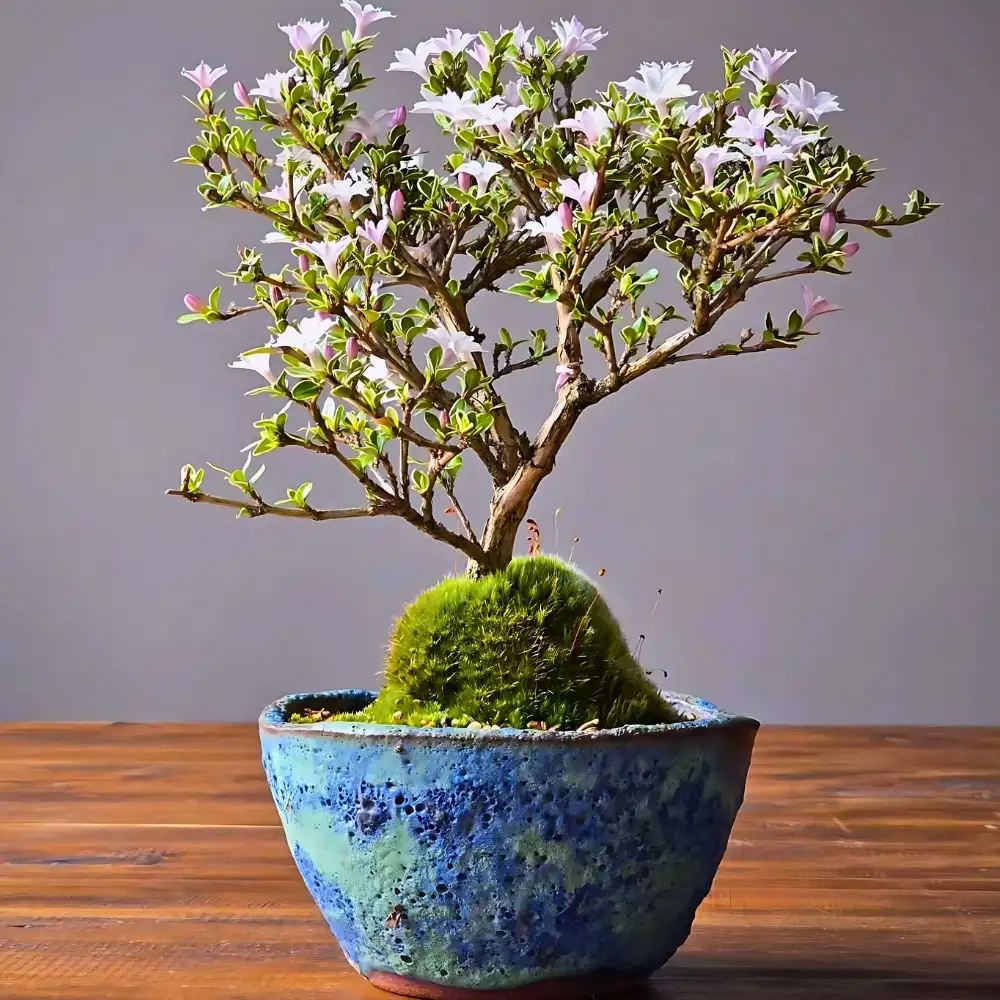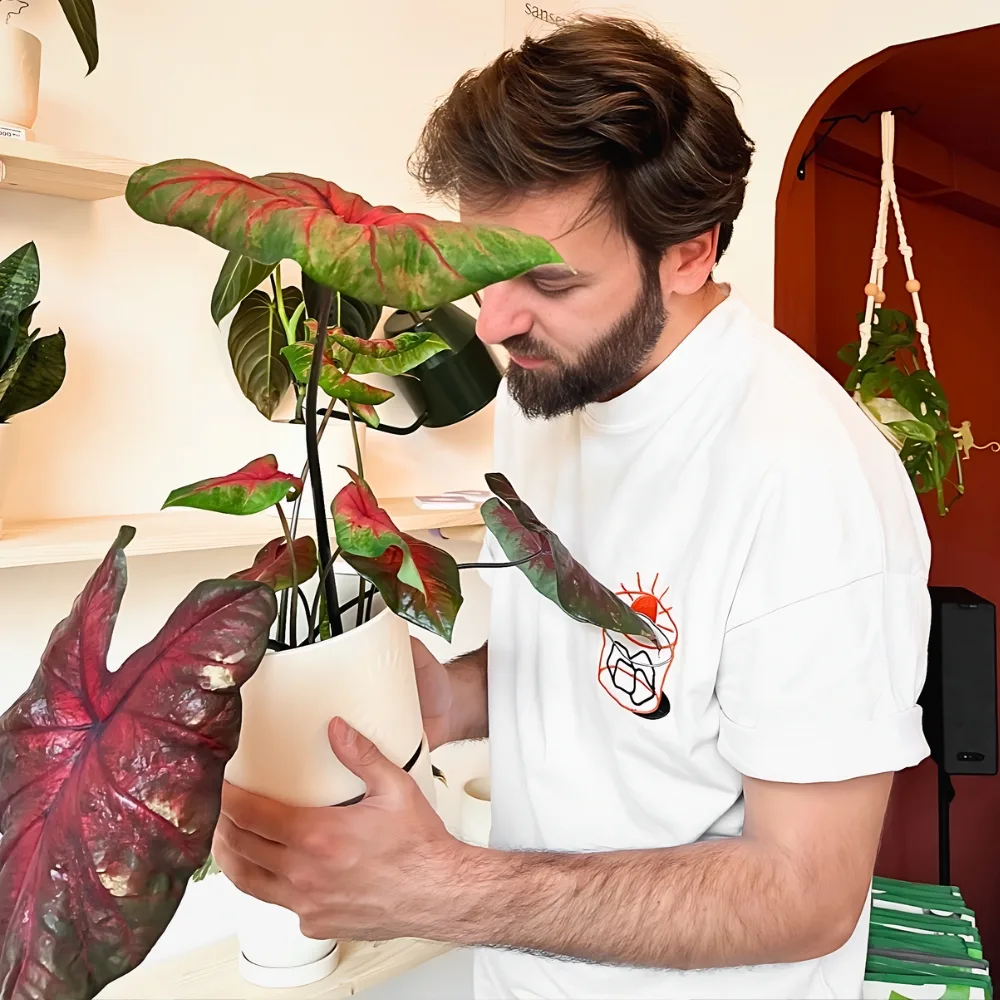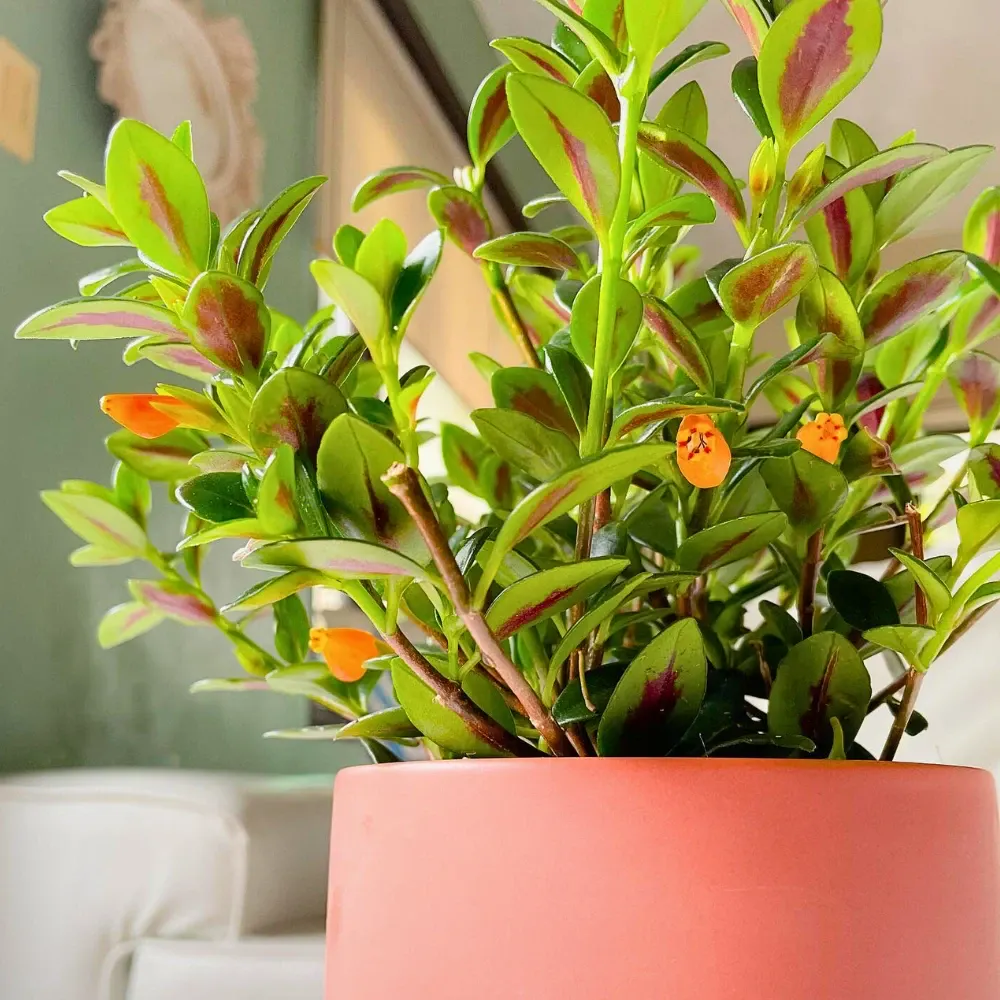If you're into cacti but don't really know which ones will thrive best in your house, you can read all about it now. Get ready to become the ultimate indoor cactus lover and get your house filled up with some stunning types of indoor cacti.
Different from growing traditional houseplants and needing to keep them in a rather humid enough place to maintain their health and vitality, cacti will make your life easier by not needing all of these caring instructions. Given they are desert plants, cacti appreciate and prefer dry air and average room temperatures, making them simple to grow and easy to care for houseplants.
Types of Indoor Cactus
A cactus indoors is the closest you can get when it comes to low-maintenance plants. Cacti are designed for drought resistance since they are succulents, which means they store water in their stem or leaf. But that is not the only thing that sets them apart. Members of the Cactaceae family have areoles, little bumps on the outside of the plant with some really unique abilities, unlike other succulents (and all other plants, for that matter). Areoles are the structures that give cacti their distinctive spines, blooms, branches, and leaves, giving rise to the hundreds of enthralling forms that various cactus species can assume.
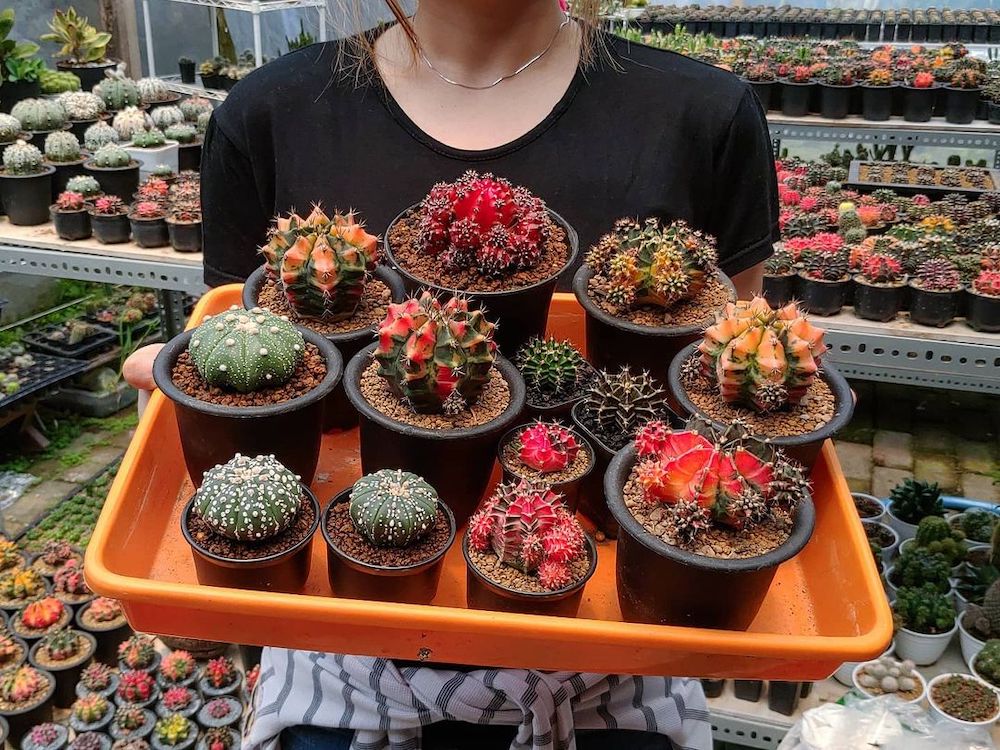
There are many indoor cactus types. And there are many that grow well inside your home. But, take note: make sure to always source your cacti from nurseries, retailers, garden centers, and flower shops. And never from the wild. And remember, keep cactus plants away from pets and small children to prevent injury.
Some well know cacti you might know are the 'Cowboy Cactus', and the 'Barrel Cactus', but there are many cacti that look very different than the ones you see above, and different than you might expect.
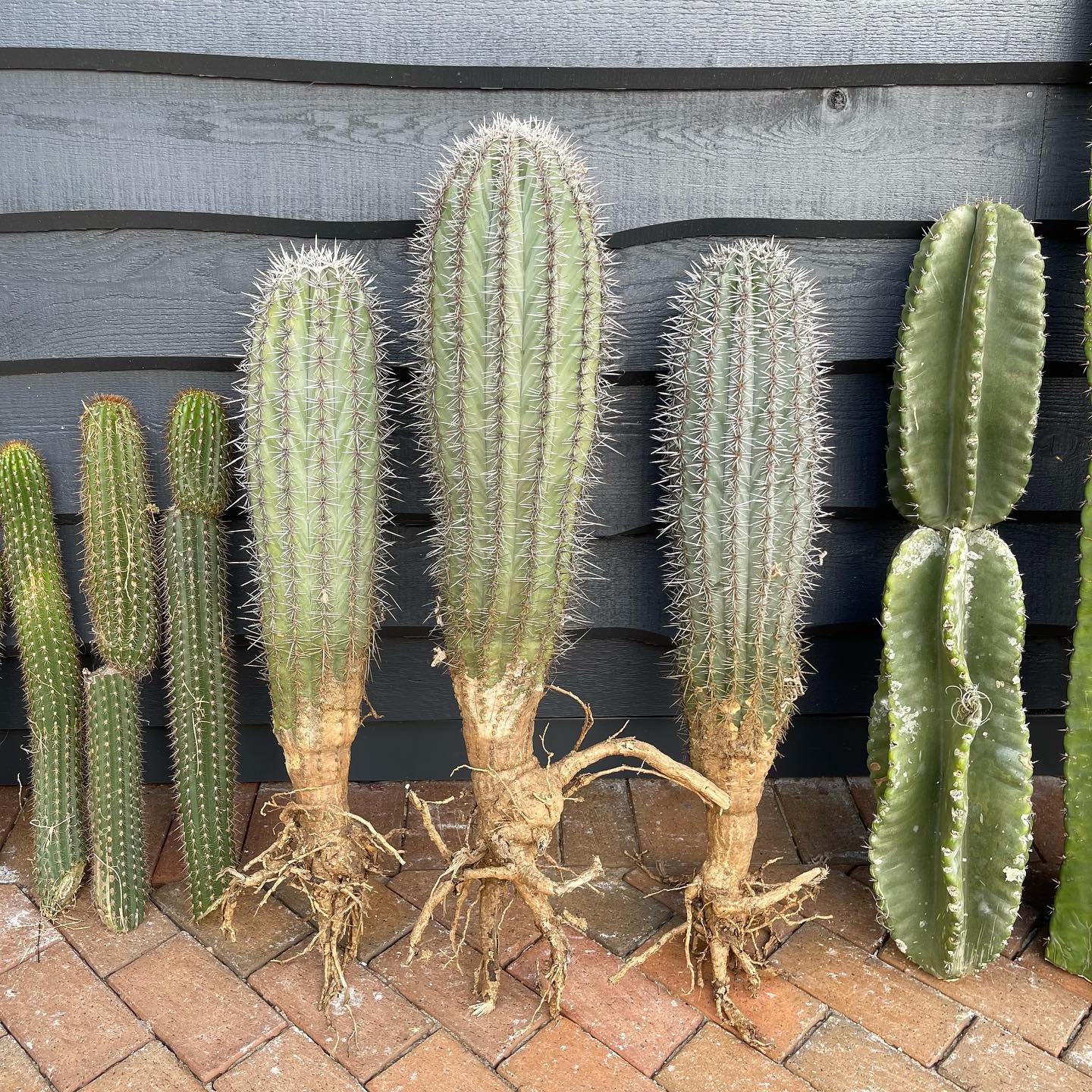
Even while some sunlight is required for indoor cactus health, many indoor cactus plants may survive on only a few hours of it each day, and additional lighting can benefit plants that are placed in north-facing windows. Even more of a gift for plants that already excite with strange shapes and prickly textures, a happy cactus may surprise you with colorful blooms. These common species' slow growth and simple maintenance needs bring appeal to mixed container plantings and make lovely freestanding displays as well.
Now, for all the cacti aficionados, here's a list of the best cactus for indoors that will make your spaces at home look better, brighter, greener, and more interesting. Which is your favorite?
1. Indoor Cactus 'Opuntia Microdasys' (Bunny Ears or Angel Wings Cactus)
Opuntia Albispina cactus, aka the angel wing cactus or bunny ears cactus, is a member of the prickly pear family. This type of indoor cactus plant grows evenly spaced clutches of hairs rather than spines.
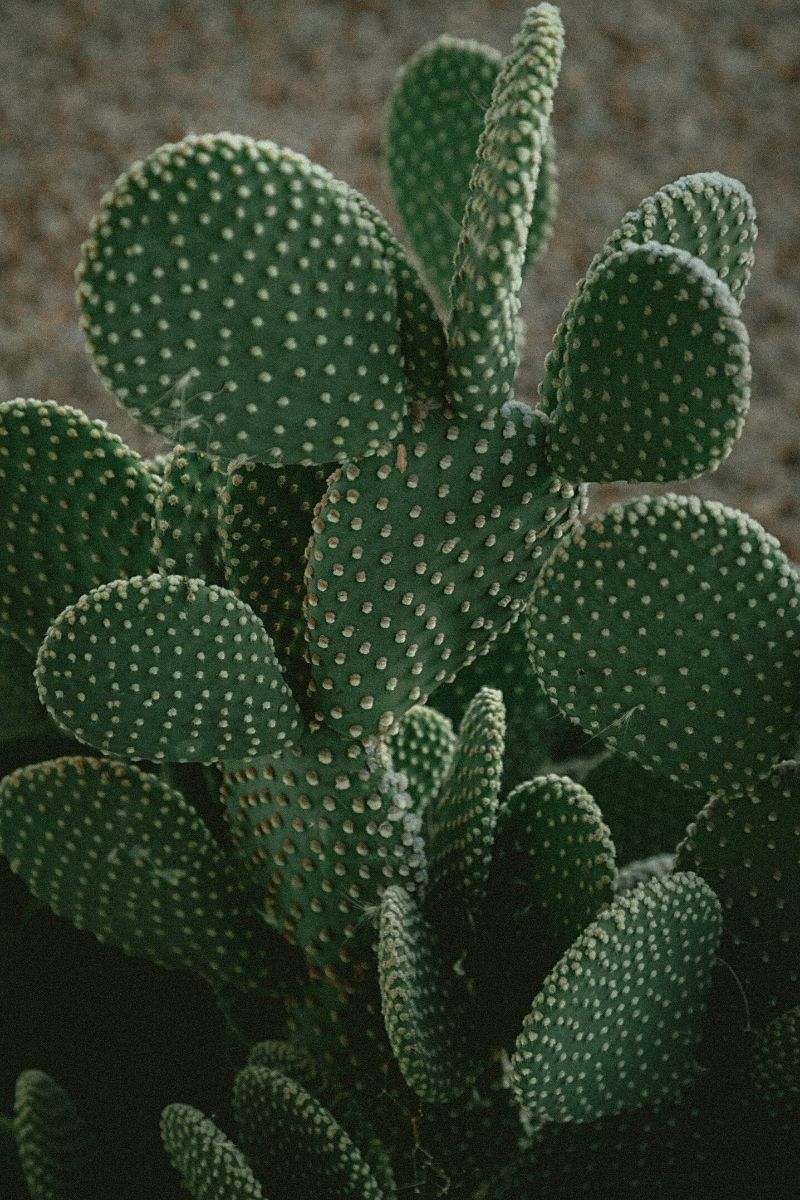
Angel Wings normally reach no larger than two feet, but can sometimes grow to be up to five feet over time. What characterizes this indoor cactus is its pale yellow blooms, followed by red, edible fruits. (This is only seen on plants that receive full sunshine every day).
2. Indoor Cactus 'Aporocactus Flagelliformis' (Rat Tail Cactus)
Yes, for this type of indoor cactus, you'll need to expose it to direct sunlight every single day. The fantastic Aporocactus flagelliformis, commonly known as rat tail cactus, is a plant native to Mexico, featuring vibrant magenta-toned blooms. And definitely, one of the best cacti to grow indoors. Surprisingly, this indoor cactus has been used as traditional medicine, especially for people who have heart problems. For the best and most beautiful decor results, choose a hanging basket and let it bloom happily with the appropriate care!
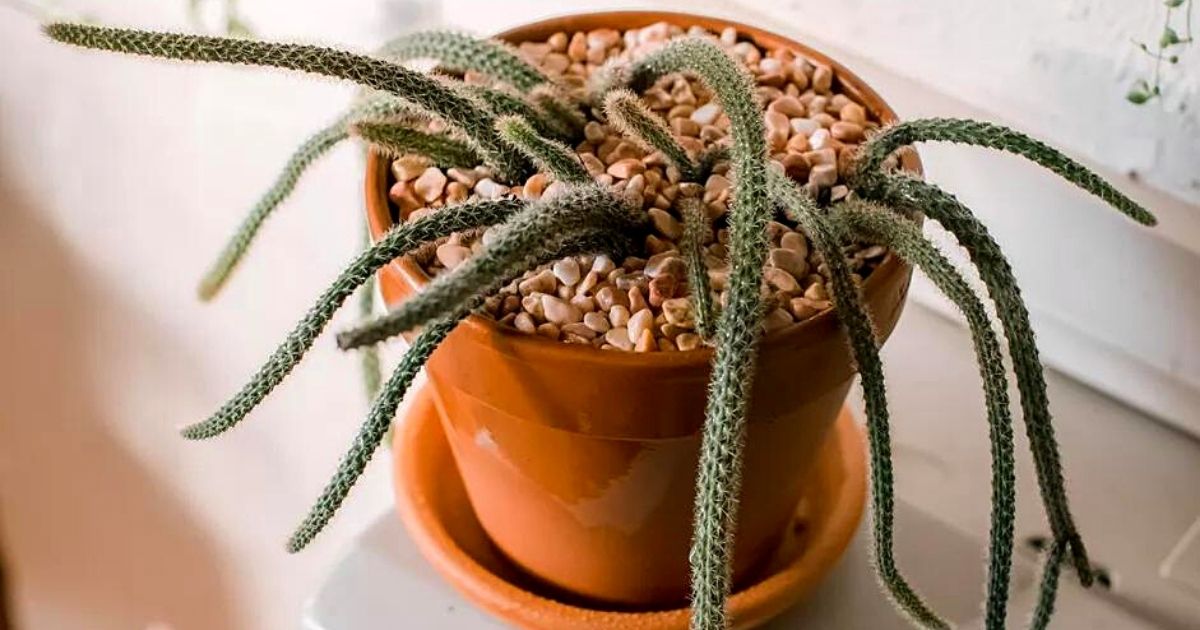
3. One of the Best Indoor Cactus Is the 'Echinocactus Grusonii' (Barrel Cactus)
Also known as one of the "fiercest cactus", don't let its name scare you! This Echinocactus or Ferocactus genus is covered with long, rigid spines that protect its succulent, yet edible pulp. A Barrel cactus is the classic desert denizen of lore. There are a number of barrel cactus varieties within two genus types, the Echinocactus, and the Ferocactus. The Echinocactus has a fuzzy crown of fine spines, while the Ferocactus is ferociously thorned. Each one can be grown as a houseplant. The barrel cactus may live for as long as decades and can eventually reach heights of eight to ten feet if grown under good circumstances.
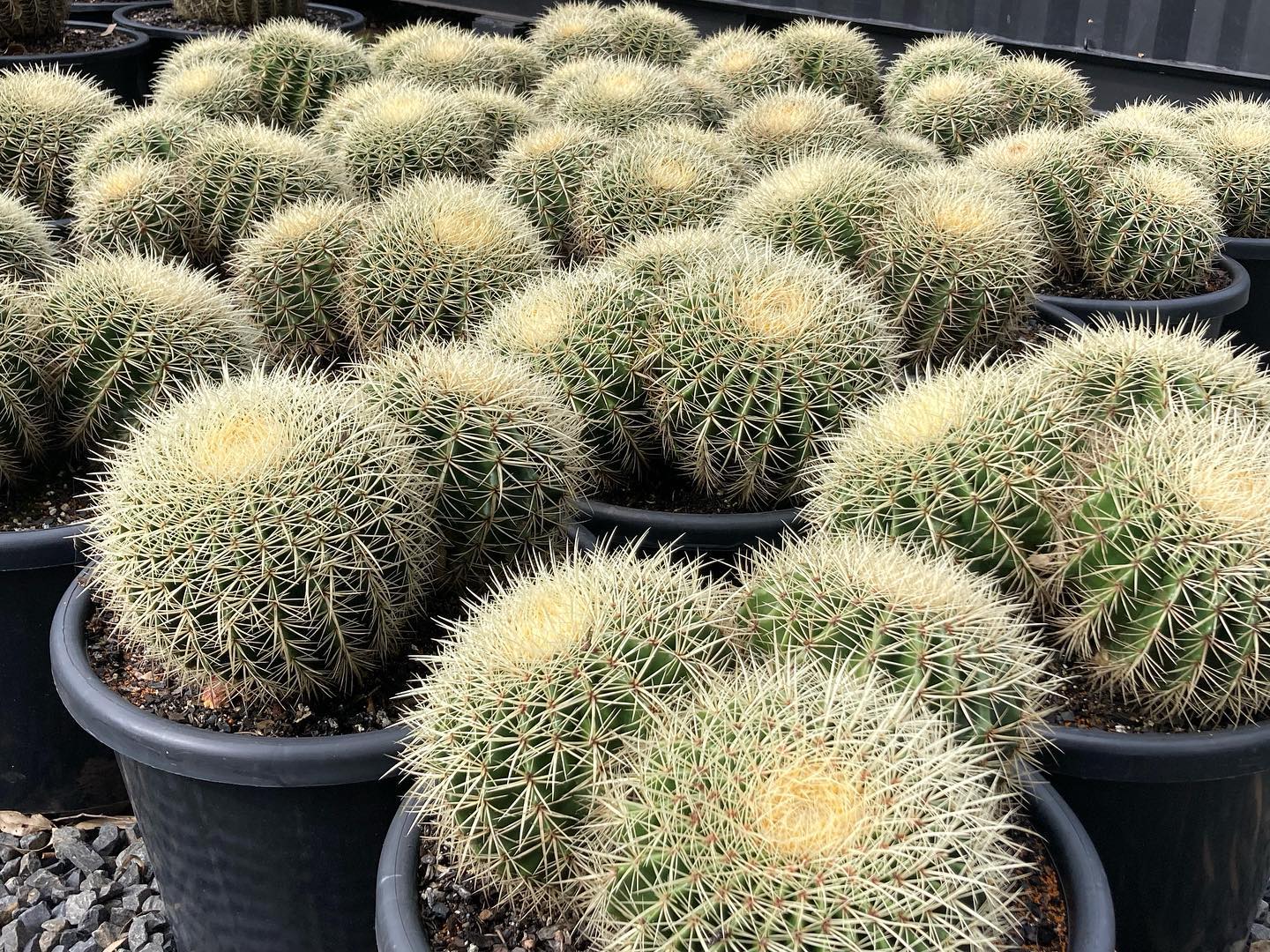
If you really want to see this cactus thrive, remember to give it as much sunlight as possible and little or no water coupled with a loose potting mix. Go ahead and place it next to your favorite window!
4. One of the More Special Cactus Types Indoor Is the 'Astrophytum Myriostigma' (Bishop's Cap)
This unique cactus species list is also one of the best to grow indoors. And it looks spectacular. By placing it in your favorite ceramic pot it can be a real eye-catcher. What characterizes this variety is its stiff spikes covered by deeply ridged spheres, which can reach various cm in height. You may get alarmed if you see a white frosty-looking like a coat on top which may get you thinking it's a disease or mold, but no worries! This is only the plant's defense mechanism to protect itself from the sun. It's very easy to take care of given it requires almost no water and needs constant sun.
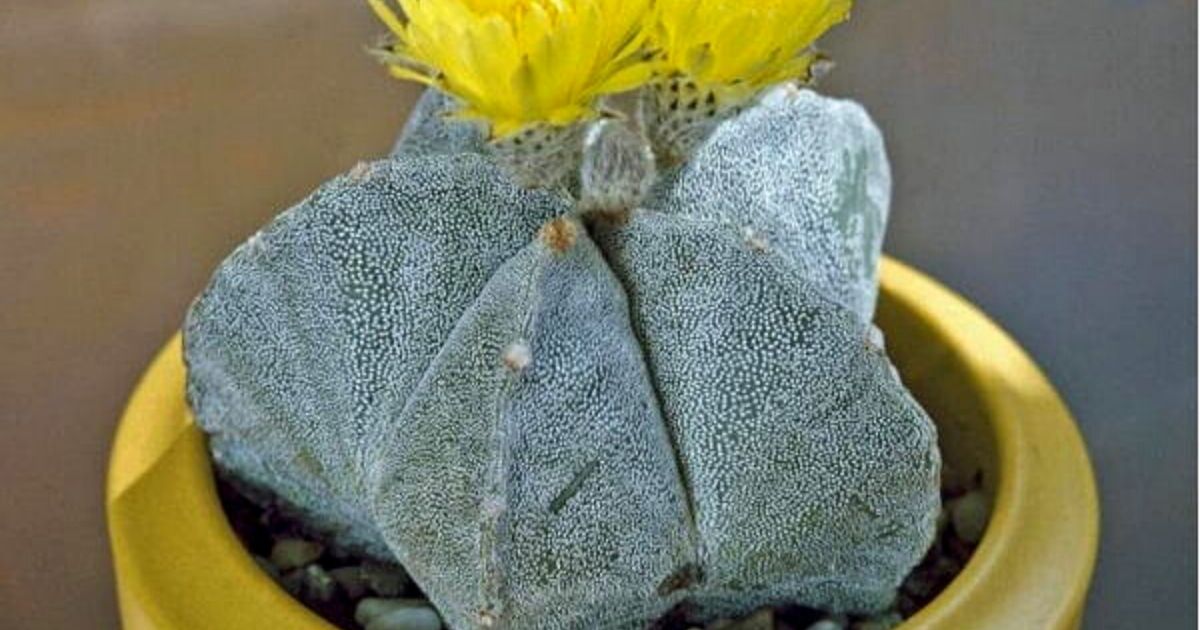
5. Large Indoor Cactus 'Carnegiea Gigantea' (Saguaro Cactus)
Ever been to the Sonoran desert? Yes, there's a gigantic, 40-foot saguaro cactus that takes over the landscape. The Saguaro is one of the most famous cacti; he is the prototype cactus in Westerns or in comics like Lucky Luke: meters high, columnar, and with side branches for arms. Such a saguaro cactus often grows more than 10 meters high and weighs more than a ton.

These impressive plants may live for two centuries, and it can take up to forty years for their flowers to bloom. One of the benefits of having this cactus as an indoor plant is its slow growth rate which makes it possible to grow one for many years as an indoor houseplant. Tip: give it as much sunlight as possible and water sparingly once a month.
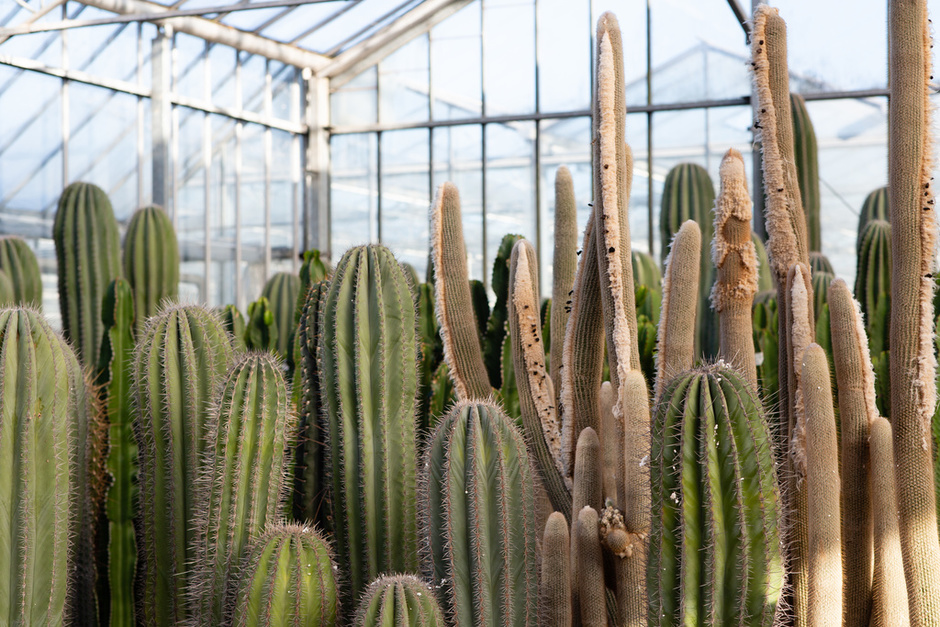
6. Indoor Cactus 'Schlumbergera x Buckley' (Christmas Cactus)
The Christmas cactus is pretty spikeless as far as the cactus family goes with its smooth segmented leaves and soft, rounded spines. The tubular flowers come in red, pink, orange, and white. This cactus species is a departure from normal cactus care. Rather, this is a succulent native to tropical rainforests, where they grow on tree branches and soak up the high humidity, dappled sunlight, and warm temperatures.
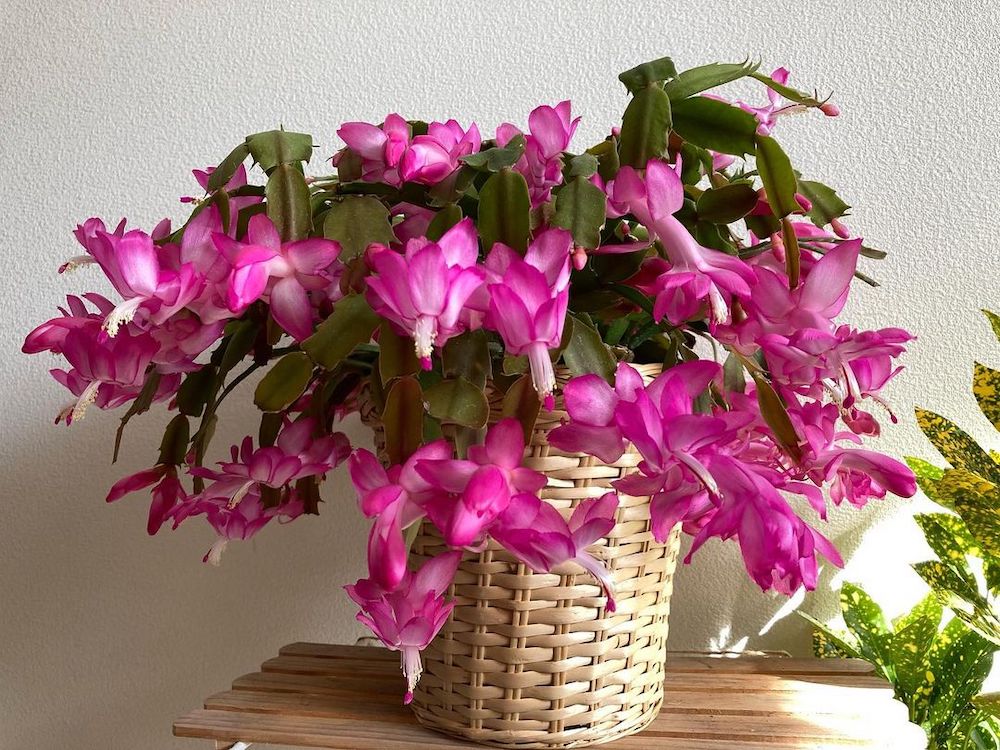
The bottom line: Don’t treat a Christmas cactus like it’s a run-of-the-mill cactus! It’s important to water these cacti more regularly but to also be cautious of keeping them too wet. Give these plants filtered light and moderate irrigation. If you can expose them to cooler temperatures between 50 and 60 degrees Fahrenheit as winter approaches, you can get your plants to rebloom.
7. Indoor Cactus Type 'Mammillaria Plumosa' (Feather Cactus)
The Indoor cactus Mammillaria Plumosa, a.k.a. the feather cactus, is a species of flowering plant in the family Cactaceae, native to Northeastern Mexico. Its clumping plants form low dense mounds covered with white feathery spines. The flowers are yellowish-white.
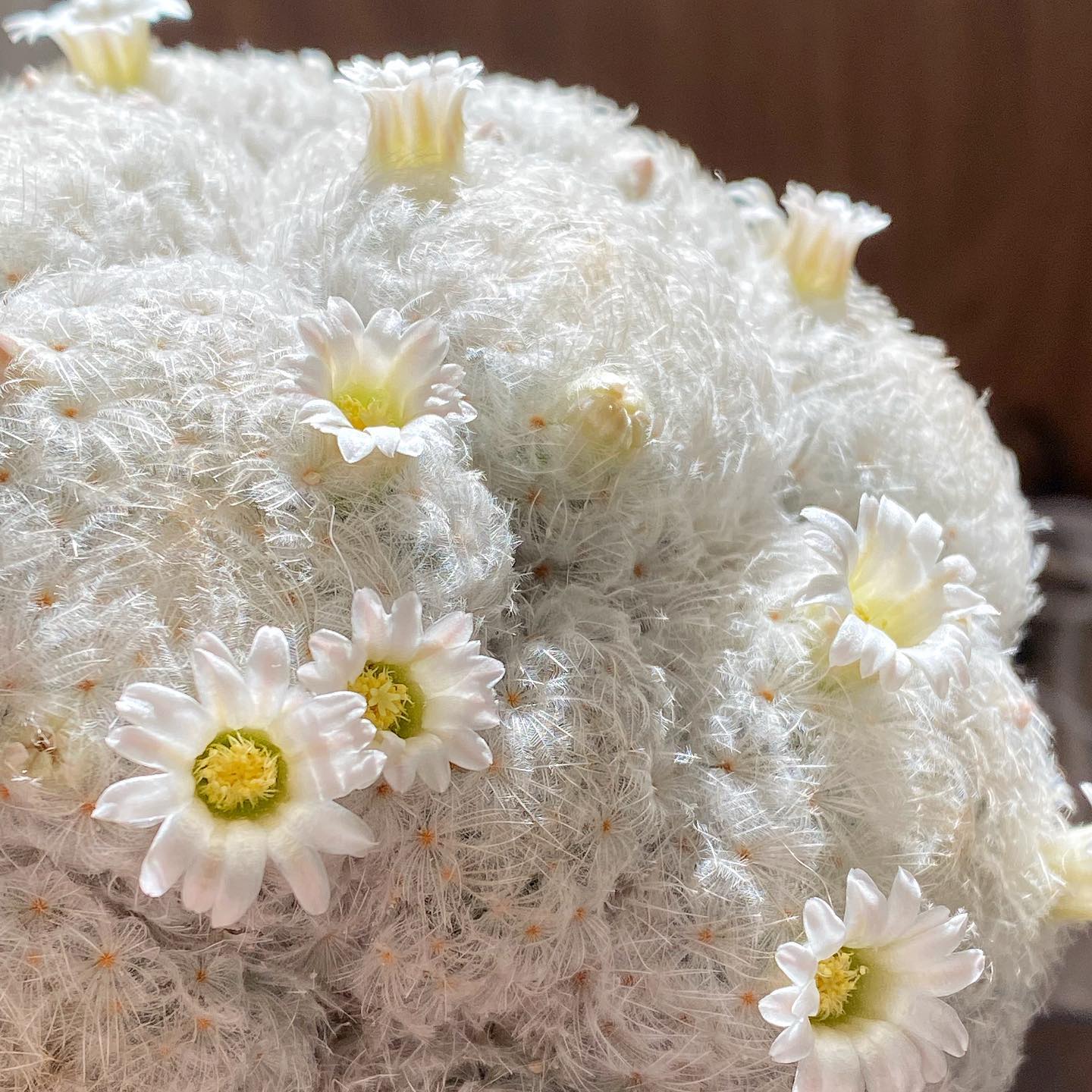
Mammillaria plumosa grows to 12 cm tall by 40 cm broad. The clustering spherical stems, 7 cm in diameter, are completely covered in white downy spines. The white “feathers” on Mammillaria plumosa look soft and fluffy, but they hide the sharp spines that cover this cactus. The “feathers” not only add interest to the cactus, but they also shade the plant from heat and sun.
8. Special Indoor Cactus 'Gymnocalycium Mihanovichii' (Moon Cactus)
This cute cactus is actually a mutant cactus. A combination of two cacti, typically Gymnocalycium (the sicon) and a rootstock cactus, such as Hylocereus. The colorful top part is known scientifically as Gymnocalycium Mihanovichii. It is endemic to Paraguay and some provinces of Argentina. In the wild, it is not nearly this colorful.
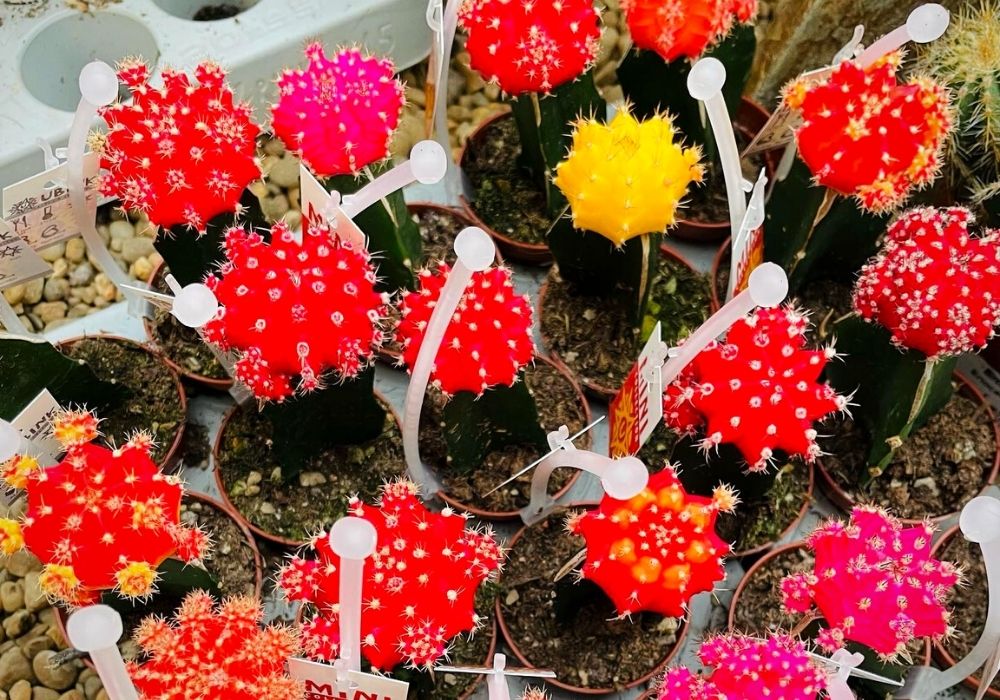
The specimens sold in garden shops all over the world are actually mutant varieties that do not produce chlorophyll, thus revealing other pigments that are normally masked by green. The term “moon cactus” typically refers to the yellow and orange varieties, however, red varieties can be included. Its lifespan is short compared to other cacti. Place this plant where it will get indirect light, as too much direct light can damage it
9. Indoor Cactus 'Euphorbia Trigona' (African Milk Tree)
This indoor cactus plant is one of those easy cactus varieties that make everyone feel like a cactus care expert. This cactus can grow more than 8 feet tall, but it is a slow grower and is unlikely to grow much past 4 feet indoors. Small green leaves grow between thorns on the ridged stems, and if you grow the Rubra variety, the leaves are reddish-purple. If you plant it in soil with good drainage and water it twice a month, then your African milk tree may live for decades. Euphorbia is a large group, containing many plants that look very different from one another.
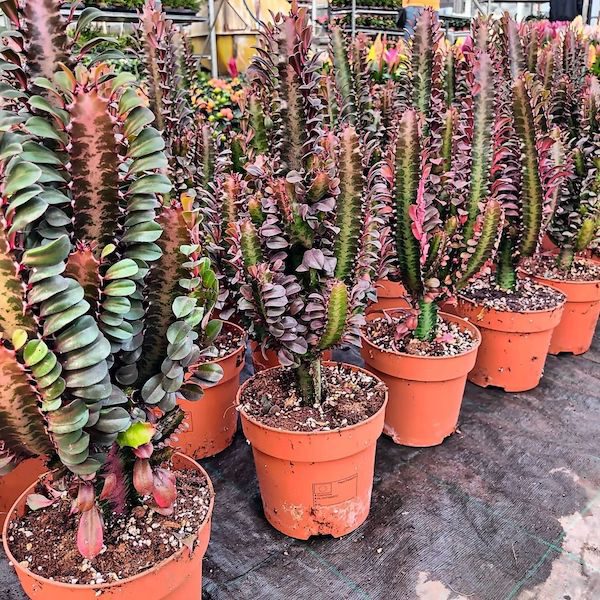
10. Hanging Indoor Cactus 'Selenicereus Anthonyanus' (Ric Rac Cactus)
You might hear the Ric Rac Cactus called a ton of different names: colloquially the Fishbone cactus, the Zig-Zag cactus, or even an orchid cactus. It’s closely related to the Epiphyllum Oxypetalum plant, which is also referred to as an 'orchid cactus.' The Ric Rac cactus is native to Mexico, and it’s a type of tropical cactus. The plant doesn’t actually have leaves—everything you see on the plant is a stem. Just a bunch of really cool stems. Indirect sunlight is a good idea. Too much direct light can scorch your plant. Indoors, the best light for the Ric Rac cactus is bright indirect light.
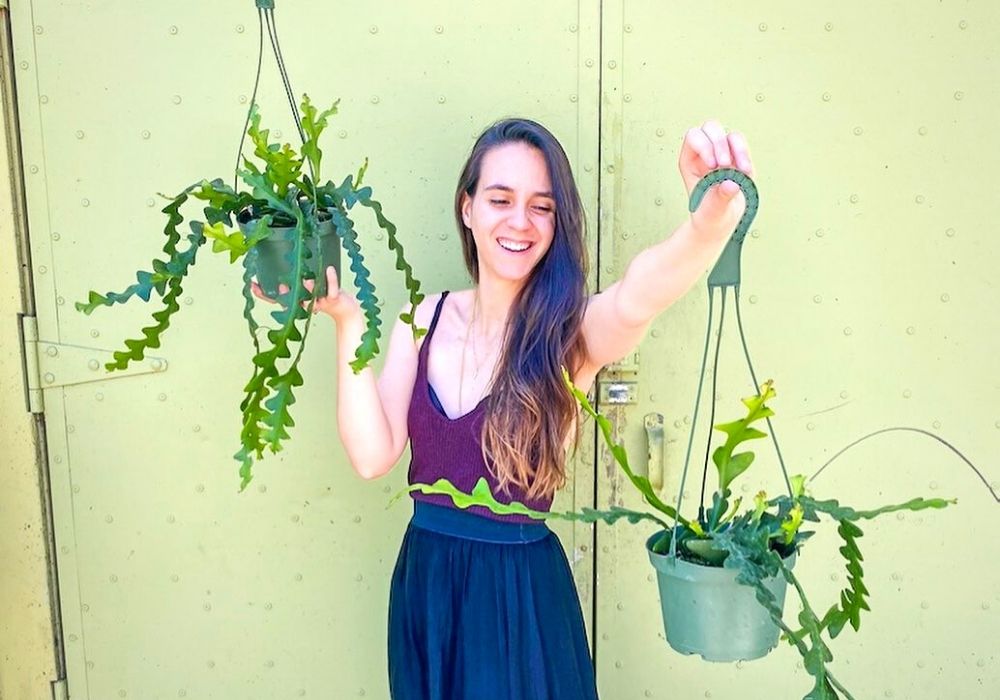
How to Care for Cactus Indoors?
As mentioned above, growing cactus indoors is really easy because most cacti only require strong, daily sunlight and almost no watering, given they are desert plants and are used to little or no hydration. Sun and cacti go together. A happy cactus may even surprise you with vibrant blooms if taken care of appropriately and giving it the love it deserves. The slow growth and easy care requirements of these popular varieties will add charm to any plantings and make elegant specimens as well. Your indoor cactus care is quite easy when you follow these instructions:
How Much Sunlight Does Your Types of Cactus Indoor Need?
Cactus plants indoors require a bright area because they do best with good light conditions. A place that faces south will get plenty of light. But be careful not to place them in direct sunlight since the strong light may cause the cactus indoor plants to turn yellow. The best kind of light for growing cacti and succulents depends on the species that you are using. For instance, forest-dwelling epiphytes like Rhipsalis require some shade, whereas an Echeveria requires strong light.
Cactus Indoor Plants' Temperature and Humidity
Your cactus indoor plant likes it warm but will tolerate cooler temps too. Make sure to keep your cacti away from cold drafts and any blasts from air conditioning or heating vents. A cactus indoors differs from most other houseplants with origins in the subtropics or tropics. They like the air dry, which is good because most home environments are on the dry side. No need to mist or spray these babies!
Fertilizer and Feeding of Your Cactus Plants Indoor
What is the ideal fertilizer for succulents and cacti? Don't do it excessively or frequently. For plants grown in containers, 2-3 times a year during the active growing season is adequate. Utilize balanced plant food that has been diluted to 50% strength. There are specialized cactus fertilizers available. Feed your cactus at the start of spring, the start of summer, and just before fall. Once in the spring and once in the summer will do in areas with a shorter growing season.
How Often to Water Cactus Indoors?
Cacti generally require more light than those beloved plump succulent plants. Just be aware that cacti can burn in the strong, direct sun, especially if they are in a window touching the hot glass. If you've ever touched the heated glass, you understand why many greenhouses in summer have white glasses. The glass is white-washed to reduce the intensity of the sun even though the plants are grown in greenhouses.
Cactus Plants Indoor Re-potting
If your cacti or succulent is pot-bound, then it's time to re-pot. The best time for this is in the spring. To re-pot your indoor cactus, follow the next easy steps:
- Firstly water the plant and allow it to drain before removing carefully it from the pot, using folded paper or old cloths to protect your hands against the spikes;
- Clear away the old soil from the roots with a thin stick, such as a chopstick, so that you do not damage the roots;
- Put a layer of potting mix in the new pot, which is slightly bigger in diameter, and sit the plant on it;
- Fill the rest of the pot with the potting mix and firm it down;
- Do not water for a few days to prevent the rotting of damaged roots.
Cactus Care Indoors Conclusion
Keeping the conditions described above gives the best care for your Cactus Indoors. Most importantly, remember when it comes to caring for your plant is that you are trying to recreate its natural habitat!


